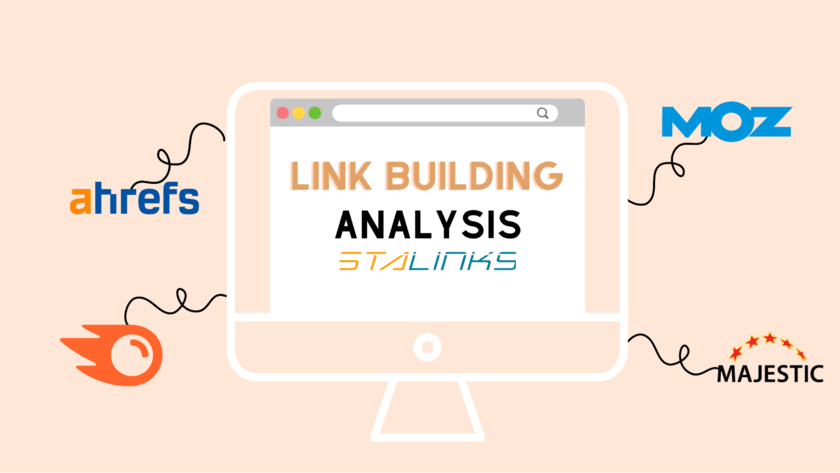Posted on July 7, 2023
Link building metrics play a crucial role in determining the success of your website’s SEO strategy. By analyzing these metrics, you can gain valuable insights into the effectiveness of your link building efforts and make informed decisions to optimize your strategy. In this article, we will explore the importance of link building metrics in 2023 and provide practical tips on how to measure and analyze them.
What is Link Building Metrics?
Link building metrics are indicators that help evaluate the quality and relevance of the backlinks pointing to your website. In 2023, search engines like Google consider high-quality backlinks as a strong signal of a website’s authority and trustworthiness. When other reputable websites link to your content, it signals to search engines that your website is a reliable source of information. This, in turn, can positively impact your search engine rankings and organic traffic.
Key Factors
Domain Authority (DA) and Page Authority (PA)
One key link building metric is Domain Authority (DA) and Page Authority (PA). These metrics, developed by Moz, represent the authority and credibility of a website. A higher DA or PA score indicates a stronger backlink profile. Search engines use these metrics as a measure of a website’s overall quality and trustworthiness. For example, if a website with high DA links to your site, it can significantly boost your own authority in the eyes of search engines. To improve these metrics, focus on acquiring backlinks from reputable websites that are relevant to your niche and industry.
Backlink Profile Analysis
Another important metric is analyzing your backlink profile. It involves assessing the quality and quantity of the backlinks pointing to your website. Tools like Ahrefs, SEMrush, and Majestic can help you analyze the strength and diversity of your backlink profile. For instance, Ahrefs provides a comprehensive backlink analysis, including data on referring domains, organic traffic, and anchor text distribution. By examining your backlink profile, you can identify any toxic or spammy links that may be harming your website’s reputation. Additionally, you can assess the overall diversity of your backlinks, ensuring that you have a healthy mix of links from various sources and anchor texts.

Tools and Techniques for Measurement
Analyzing Link Building Metrics
To measure and track link building accurately, you need to utilize the right tools and techniques. Several tools in the market provide valuable insights into link building.
One such tool is Ahrefs. It offers comprehensive backlink analysis, allowing you to track the number of referring domains, organic traffic, and anchor text distribution. Ahrefs also provides detailed information on the quality of the backlinks, including the Trust Flow and Citation Flow metrics. These metrics help you understand the trustworthiness and impact of the websites linking to you. For example, if a website with high Trust Flow links to your site, it indicates that the backlink comes from a reputable and authoritative source.
SEMrush is another popular tool that provides in-depth analysis of backlink profiles. It offers features such as backlink gap analysis, which allows you to identify potential link-building opportunities by comparing your backlink profile with your competitors’. SEMrush also provides data on the historical development of your backlink profile, enabling you to track changes over time. By monitoring the changes in your backlink profile, you can identify trends and patterns that can inform your link building strategy.
Majestic, on the other hand, focuses on the Trust Flow and Citation Flow metrics. These metrics measure the quality and influence of your backlinks. Majestic’s Trust Flow metric reflects the trustworthiness of a website based on its backlink profile, while Citation Flow measures the quantity and influence of the backlinks. By using Majestic, you can assess the overall trustworthiness of your backlinks and identify any potential areas for improvement. For instance, if you notice a significant difference between the Trust Flow and Citation Flow scores of your backlinks, it might indicate a need to acquire more high-quality backlinks to improve the overall authority of your website.
Setting Up a Link Tracking System
In addition to these tools, setting up a link tracking system is crucial for accurate data collection. Tools like Google Analytics and Google Search Console can provide valuable data on the performance of your backlinks, including organic search traffic and click-through rates. By utilizing these tools, you can gain insights into the effectiveness of your link building efforts and make data-driven decisions.
Analyzing and Interpreting Link Building Metrics
Once you have collected the necessary data, it’s time to analyze and interpret your link building. Start by establishing baseline metrics to compare against future progress. This will help you gauge the effectiveness of your link building efforts over time.
Look for trends and patterns in your link building metrics. Are there particular types of content or outreach strategies that result in more high-quality backlinks? For example, you may discover that creating informative and shareable infographics attracts more backlinks from reputable websites. By identifying these patterns, you can replicate successful strategies and adjust your link building tactics accordingly.
Additionally, consider analyzing the geographical distribution of your backlinks. Are there specific regions or countries where your backlinks are concentrated? This analysis can help you identify opportunities for expanding your reach and targeting new markets. For instance, if you notice that a significant portion of your backlinks comes from a specific country, you can tailor your content or outreach efforts to appeal more to that audience.
Leveraging Link Building Metrics for Success
Link Building Strategy Optimization
Link building metrics are not just for analysis; they should also drive your strategy. Utilize the insights gained from analyzing link building to optimize your overall strategy. Identify areas for improvement and implement effective strategies to enhance your backlink profile.
Link Building Outreach and Prospecting
Link building outreach and prospecting can greatly benefit from metrics-driven research. Use your link building metrics to identify websites with high Domain Authority and relevant content in your niche. This targeted approach will increase the likelihood of acquiring high-quality backlinks and enhance your website’s authority in the eyes of search engines. For example, if you run an online fitness blog, focusing on obtaining backlinks from authoritative fitness websites can significantly boost your website’s credibility and visibility in search engine results.
Furthermore, leverage the data from your link building metrics to prioritize your outreach efforts. Focus on building relationships with influential websites that have a proven track record of providing valuable backlinks. By targeting these high-quality sources, you can maximize the impact of your link building campaigns. For instance, reaching out to industry experts or thought leaders in your field and securing a backlink from their website can have a substantial positive effect on your SEO efforts.
Conclusion
In 2023, measuring and analyzing link building metrics is essential for the success of your SEO efforts. By understanding the significance of these metrics, utilizing the right tools, and interpreting the data effectively, you can optimize your link building strategy and drive organic traffic to your website. Stay proactive, adapt to the evolving landscape of link building, and leverage link building metrics to stay ahead in the competitive world of SEO.
Remember, link building metrics are not just numbers on a screen, they are valuable insights that can unlock the potential for your website’s growth and success.

